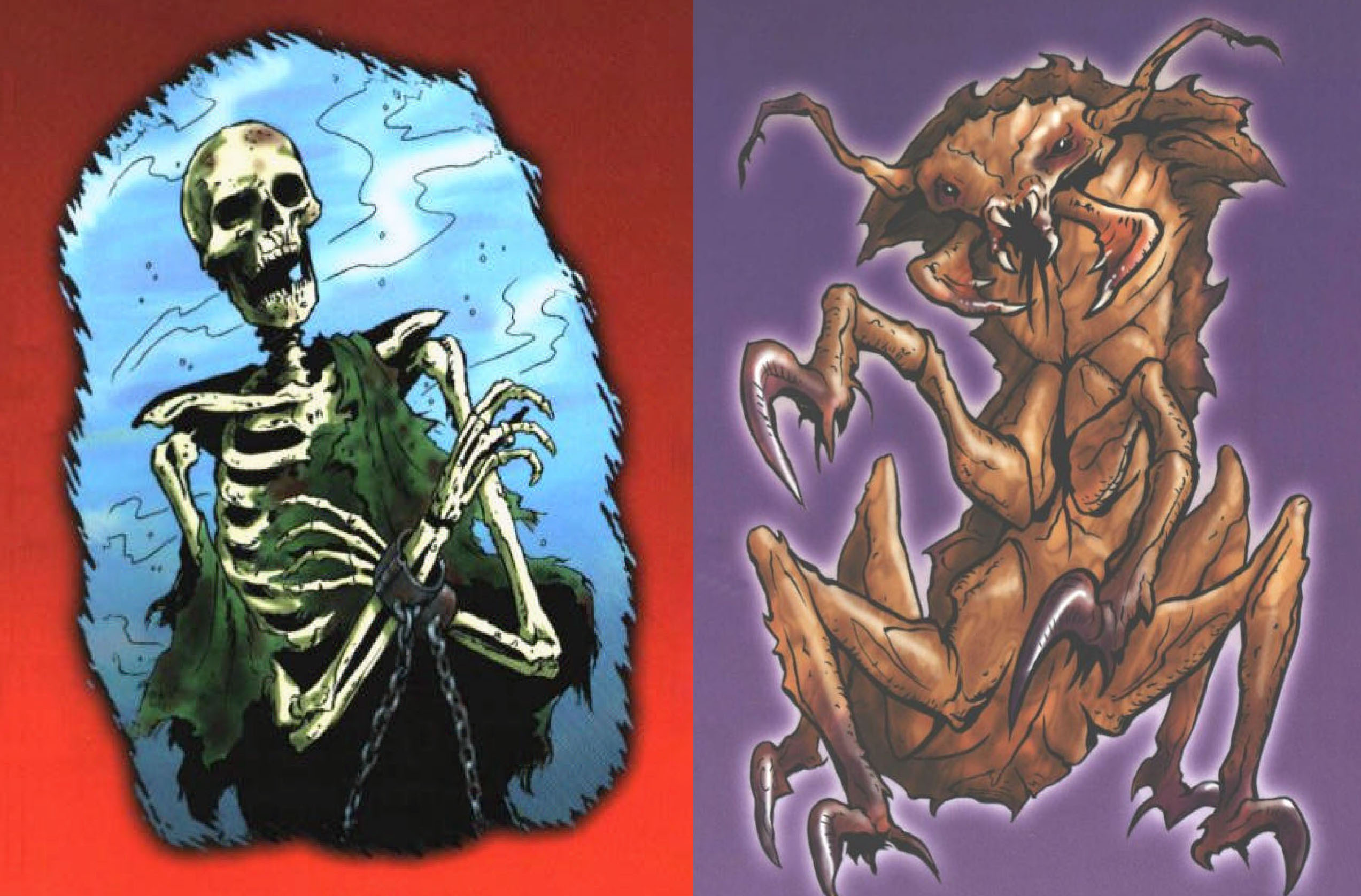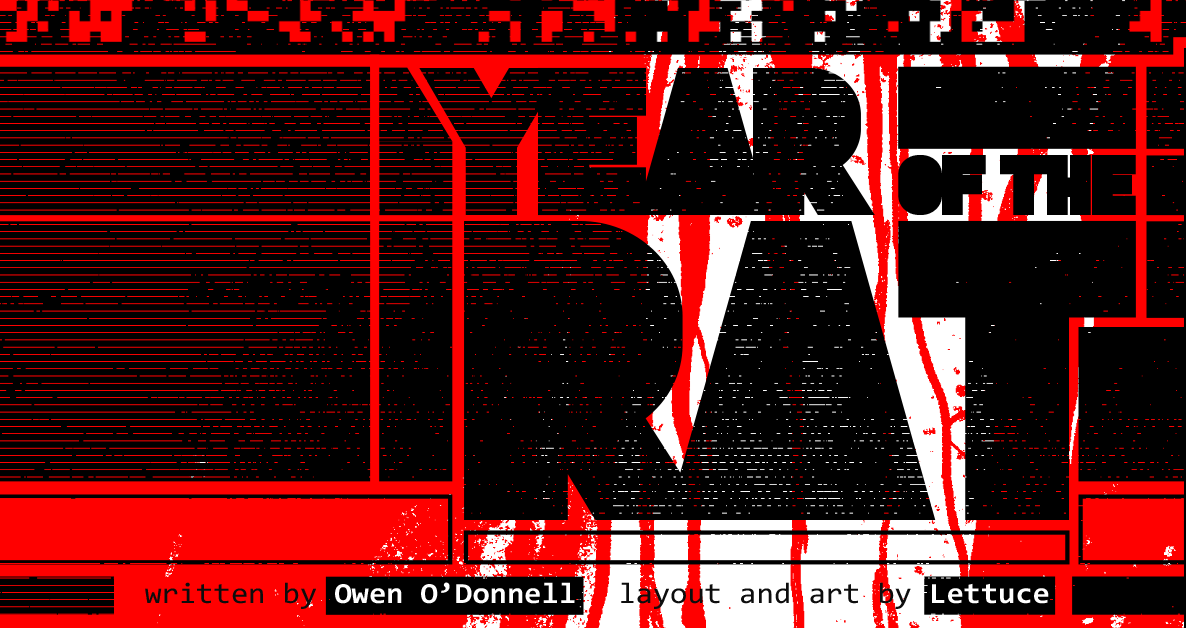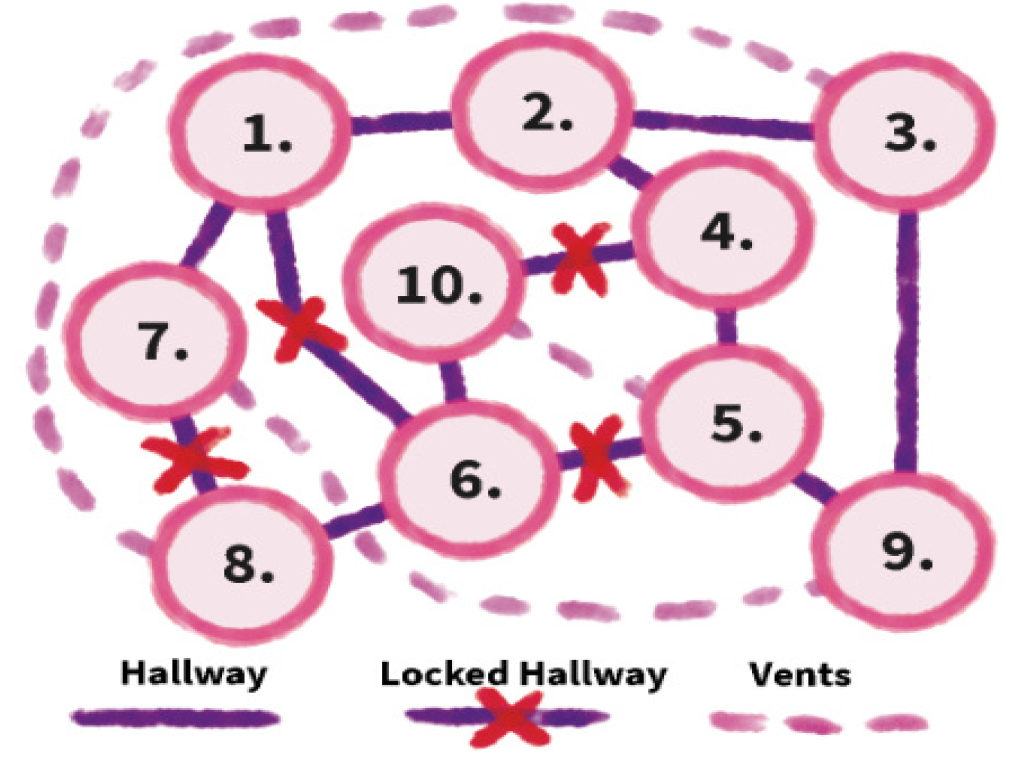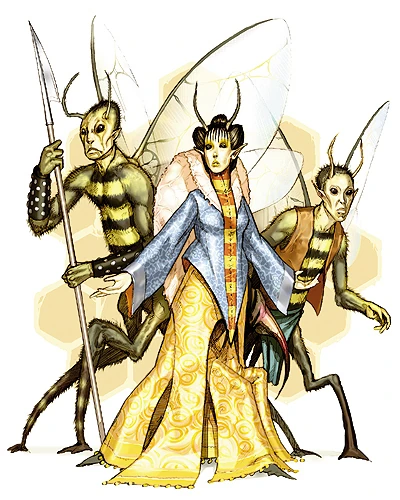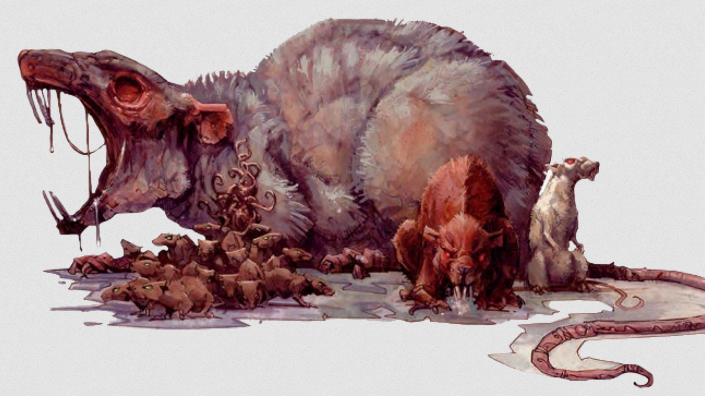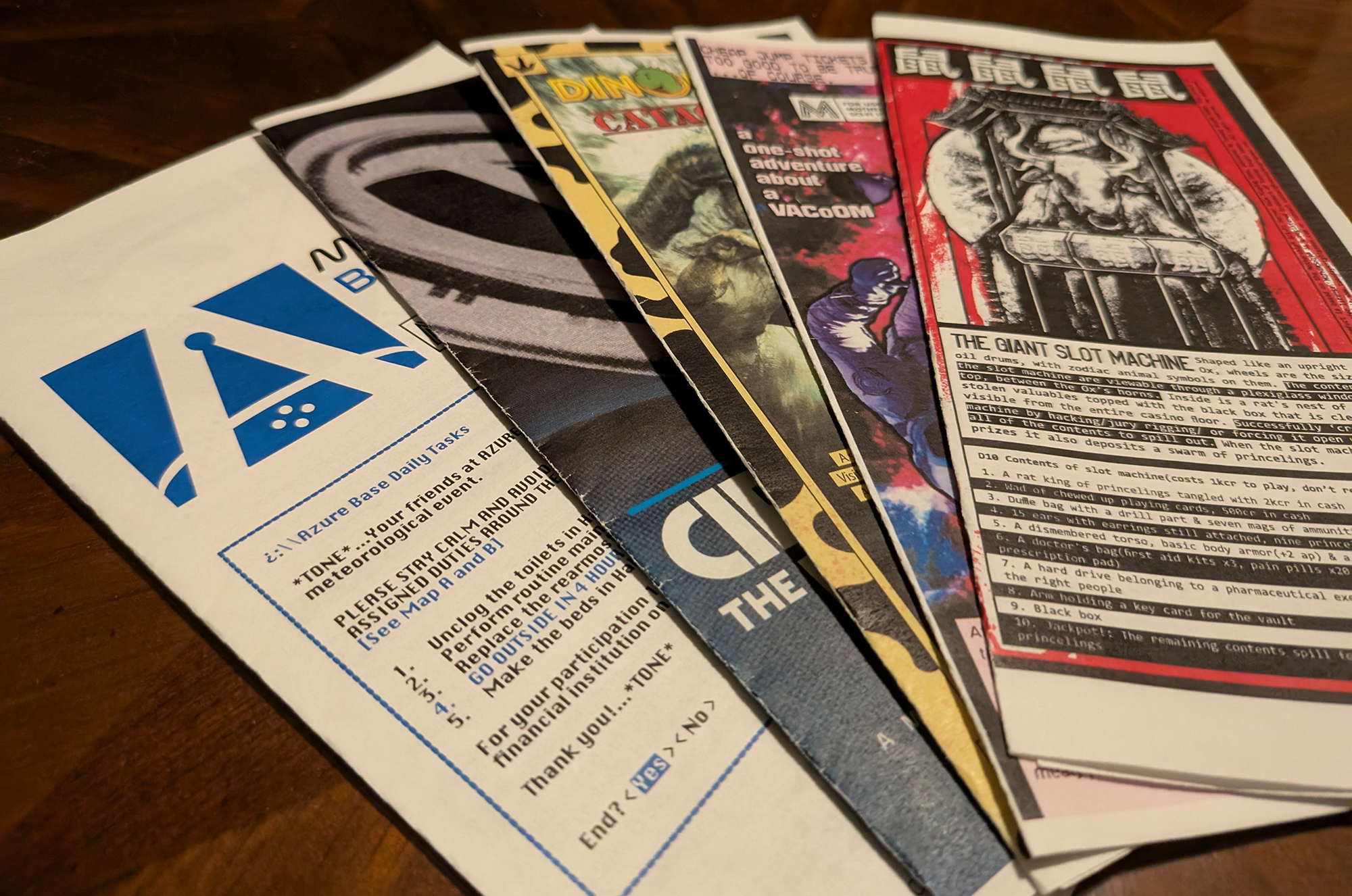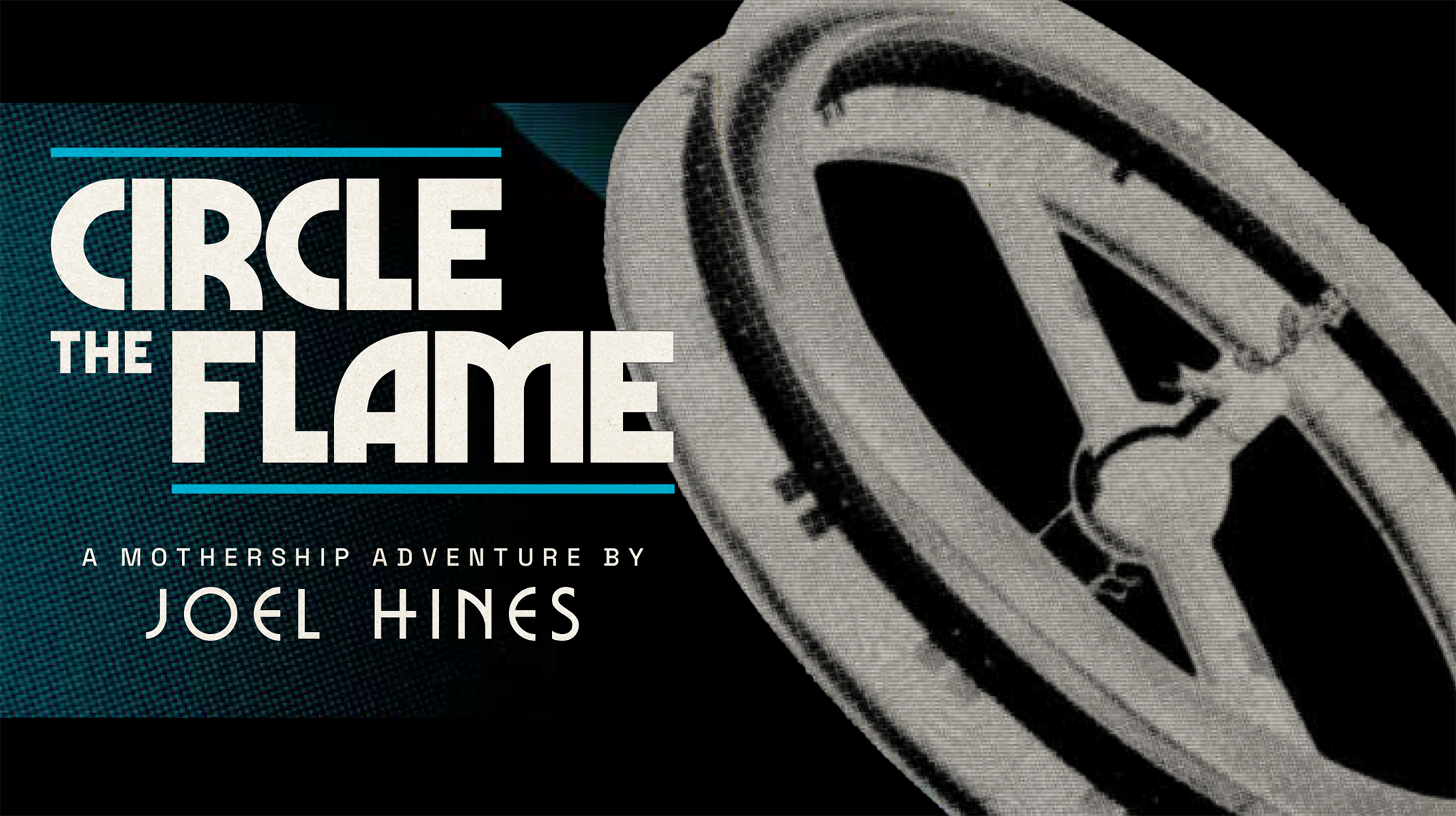With the Adventure Boosters AEG is the latest company to jump on the D20 bandwagon. But the Boosters are short, cheap, and funny-looking… Wait. Say what?
Review Originally Published January 8th, 2001
With the Adventure Boosters, AEG is the latest company to jump on the D20 System bandwagon by publishing modules suitable for use with the third edition of Dungeons & Dragons. The Boosters, however, come with a few of unique twists which help them stand out in a rapidly expanding market: First, they’re short. Second, they’re cheap. Third, they’re funny-looking.
Each of the Boosters is a four-inch by eleven-inch pamphlet: Essentially they’ve taken four normal sheets of paper, folded them over, and stapled it together with a cardboard cover.
Eight of these Boosters have been released so far, with the first two – Castle Zadrian and Sundered Faith – being reviewed here. The format for each is essentially identical: A location-keyed adventure, with a map in the center of the book, a new monster, and a new magical item.
At $2.49, the result is a quickly absorbed impulse buy which still manages to pleasantly fill an evening of gaming.
Warning: From this point forward, this review will contain spoilers for Castle Zadrian and Sundered Faith. Players who may end up playing in these modules are encouraged to stop reading now. Proceed at your own risk.
CASTLE ZADRIAN
Castle Zadrian, the first in the series, is written by Rich Wulf. The premise is simple: Lady Elena Zadrian’s father has disappeared, and she hires the PCs to go search for him at his country estate. The catch: Timoth Zadrian, her father, is a legendary alchemist. He has recently been experimenting with interdimensional space and has succeeded in making the rooms on the inside of his house larger than the outside of his house through the creation of a “dimensional web.” Unfortunately, a group of chaos spirits (the new monster for the Booster) have slipped through the gaps 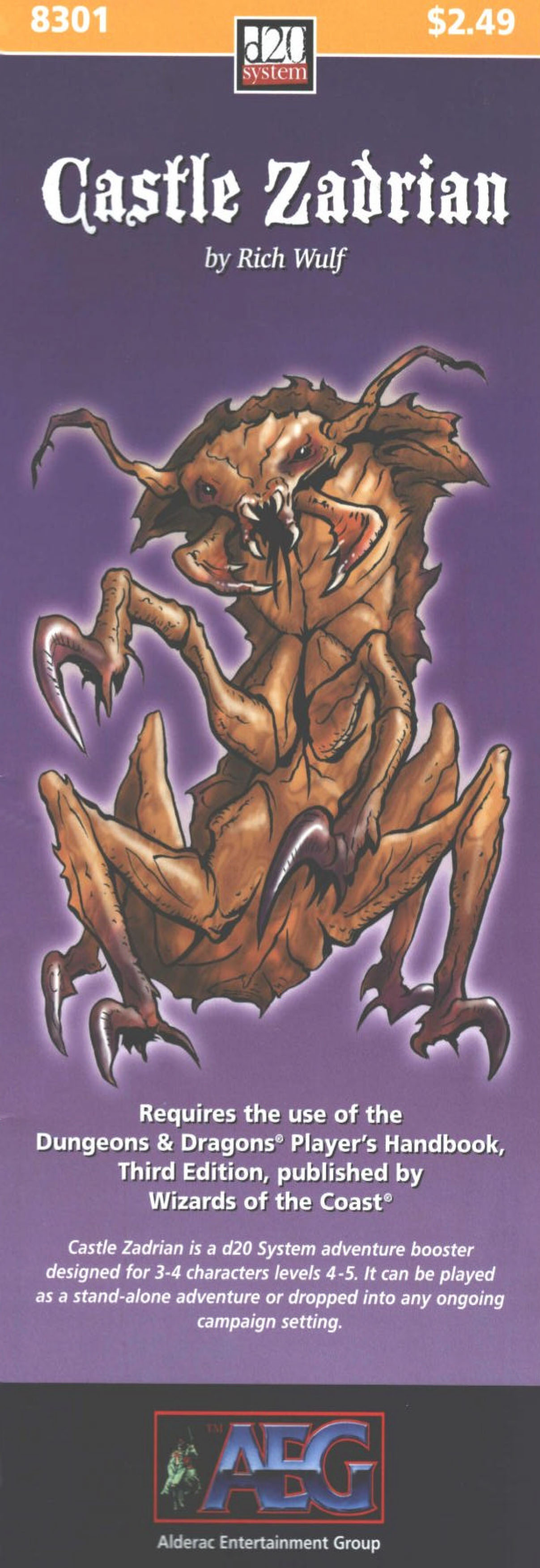 in the dimensional web and into his house, imprisoning Timoth and generally wreaking havoc. The PCs have to figure out what’s going on, navigate a house which exists in multiple dimensions, and rescue Timoth Zadrian from the chaos spirits.
in the dimensional web and into his house, imprisoning Timoth and generally wreaking havoc. The PCs have to figure out what’s going on, navigate a house which exists in multiple dimensions, and rescue Timoth Zadrian from the chaos spirits.
In my opinion, Castle Zadrian is the weakest of the Adventure Boosters released so far (which is unfortunate, considering it’s perhaps the one people are most likely to pick up first). While the dimensional interior gimmick is interesting, many of its more fascinating possibilities remain unexploited (for example, the possibility of the house’s topography changing while the PCs are inside). The boxed text throughout the adventure misfires: scenes of wonder (such as a library filled with falling snow) are tossed aside as if they were unimportant baggage; in other cases it reveals information the PCs have no way of knowing (“Sir Timoth has never been a warrior…”). The treasure and XP methodology that Wulf exercises here is also dodgy at best.
The biggest problem with Castle Zadrian, however, is simple carelessness in the scenario’s design: The spine of the adventure is an alchemical mystery which must be untangled so that the dimensional webbing can be unraveled and the chaos spirits banished. While it is, for the most part, handled well, Wulf makes one key mistake: An important clue hinges upon seven coffins which are decorated with different alchemical metals: Gold, silver, iron, quicksilver—Hold it. You can’t decorate a coffin with quicksilver: Quicksilver is liquid at room temperature.
What’s more, Wulf knows this! Later in the same adventure he writes that the quicksilver must be poured over the crystal sphere which is the lynchpin of the dimensional web. I’m just not sure what he was thinking when he wrote this.
Castle Zadrian is based on an interesting concept (a house with an interdimensional interior which has slipped out of control)… but since I’ve just told you that concept, I’m not sure there’s anything worth picking up here.
(Castle Zadrian is designed for 3-4 characters of levels 4-5.)
SUNDERED FAITH
Sundered Faith, on the other hand, is an excellent example of what the Adventure Boosters can accomplish. The only real flaw here is that the first part of the adventure consists of the PCs moving from one 10’ by 10’ room full of monsters to another 10’ by 10’ room full of monsters. (Although, to be fair, perhaps this was meant to be a bit of an in-joke by Kevin Wilson.)
 In Sundered Faith a recent earthquake has opened an entrance from a fallen temple dedicated to the God of Death into the city’s sewer system and undead are emerging through it to carry off and kill helpless members of the citizenry. When the PCs go to investigate they have to fight their way through a couple sorties of zombies (in the aforementioned sequence of 10’ x 10’ rooms), before having a floor fall out from under them. Falling down a tube, they land in an underground lake which is inhabited by a massive undead Cave Wyrm (the new monster for the Booster). This is just one scene (with the lumbering, undead wyrm swimming around the PCs), and an example of how Wilson creates evocative environments.
In Sundered Faith a recent earthquake has opened an entrance from a fallen temple dedicated to the God of Death into the city’s sewer system and undead are emerging through it to carry off and kill helpless members of the citizenry. When the PCs go to investigate they have to fight their way through a couple sorties of zombies (in the aforementioned sequence of 10’ x 10’ rooms), before having a floor fall out from under them. Falling down a tube, they land in an underground lake which is inhabited by a massive undead Cave Wyrm (the new monster for the Booster). This is just one scene (with the lumbering, undead wyrm swimming around the PCs), and an example of how Wilson creates evocative environments.
Another good example of this is the Curse of Azrael, which is laid across the entire temple. It has several specific game effects (such as limiting the effectiveness of magical healing effects in the area), and these serve to elegantly reinforce the mood of the piece without resorting to telling the players what their characters are feeling. By affecting not only the PCs in the game world, but the players in the metagame, Wilson really makes the gimmick tick.
Some other good scenes: The skeletons chained to a wall in the flooded portion of the temple which try to drag the PCs to their watery doom; a hall which can suddenly fill with a mass of undead if the PCs set off an alarm; and a priest who impaled himself upon the altar of his god in order to save his temple (and thus brought the Curse of Azrael down upon the complex).
Sundered Faith actually has one other minor problem: There are several details which are supposed to be on the map which were not included. These don’t present a serious problem, but are indicative of the generally poor quality of the maps in all of these Adventure Boosters. They get the job done (most of the time), but are clumsily executed.
(Sundered Faith is designed for 4-6 characters of levels 6-8.)
Style: 3
Substance: 4
Title: Adventure Boosters: Castle Zadrian and Sundered Faith
Writers: Rich Wulf (Castle Zadrian) and Kevin Wilson (Sundered Faith)
Publisher: AEG
Price: $2.49/each
Page Count: 16
Product Code: 8301, 8302
I’m currently reviewing trifold adventures for Mothership, which have a very similar appeal to these old Adventure Boosters from AEG. At the time, I remember that there was a lot of talk about AEG “ripping people off” by charging them $2.50 for four sheets of paper while other companies were only charging $10 for sixteen sheets of paper (which, of course, doesn’t even make sense when you think about the math), but I was enthralled by them. At the time I think I put a lot of weight on the idea that they just made for such great impulse buys, allowing you to play the odds on Sturgeon’s Law (that 90% of every thing is crap). That was also true, but I’ve since come to realize just how powerful adventures designed to be quickly read and then immediately run.
(The Adventure Boosters are just a tidge long for this, but are close enough to get the job done.)
My original intention was to review all of the AEG Adventure Boosters, and you’ll see several more of these get reposted over the next few weeks. Midway through the project, however, I was hired by FFG to write for their line of Instant Adventures, which was the exact same concept with (if you’ll pardon my bias) better art. Given the obvious conflict of interest, I stopped reviewing the Adventure Boosters.
Next AEG Booster Review: Tomb of the Overseers / Against the Barrow King
For an explanation of where these reviews came from and why you can no longer find them at RPGNet, click here.

